Point in View Chapel

A la Ronde is a small but purposeful community designed to be both functional and beautiful. The main house sits within a simple, picturesque garden much of which remains, while at the opposite end of the estate, retaining more of a sense of the agricultural land on which the Parminters built, is the chapel of Point in View. It would have been an easy and pleasant walk for Jane and Mary between the two groups of buildings.
The building
Finished in 1811, and still to be consecrated when Jane Parminter died, the tiny, single storey building originally contained a space for worship, four alms houses, a room as accommodation for the minister, and a school room. As with A la Ronde, it is small but beautifully considered and reflects the design elements of the house, particularly the lattice windows and interconnecting rooms. Unlike the house, the design is square, with a central square spire in the centre of the flat roof. Although now lost, it is thought that originally shell decoration covered the outside of the building, perhaps therefore in some ways it exists as a reverse to the multi-sided A la Ronde with its highly decorated interior.
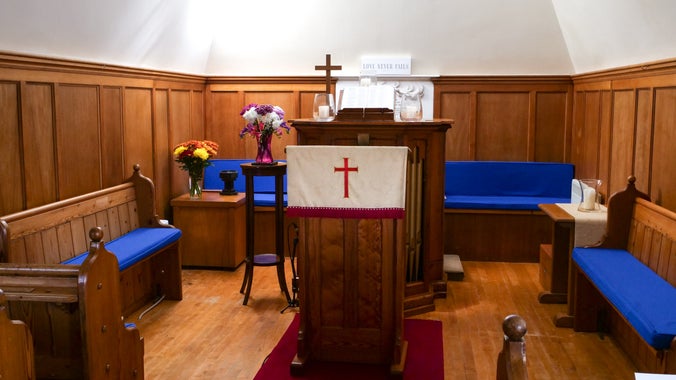
The Mary Parminter Trust
In 1813 Mary Parminter established a Trust with responsiblity for the operation of the chapel complex. It made stipulations regarding the texts to be used, the form of service, the character of the Minister and details of the alms houses and school. The women residents were to be over 50, of good character and able to support themselves through some independent means, knitting, spinning, sewing or similar work. One of the women was to act as schoolmistress to the six girls in the school.
Despite the focus on supporting single women and girls, the Trustees and the Minster, as might be expected at the time, were all men. Their report after Mary’s death notes that although she was active in the Trust through her lifetime she did not interfere in their duties. She did however, set clear direction regarding the good character of the residents, the expectations of their behaviour and that of the schoolgirls for whom she provided reading material and clothing every year.
Why build a chapel?
Jane and Mary came from a dissenting family, a term that describes all forms of Protestantism outside of the Church of England. Religious belief was clearly deeply important to them. Their family relations had been active for generations in the life of chapels in Devon as members of congregations, as trustees and as ministers. It’s unclear why Jane and Mary chose to build their own chapel. Their preference not to use a coachman on the sabbath and the difficult winter roads to Exmouth are the stories that family history records but there may have been other reasons. As protestants, they would have become used to taking a much more active role in church life than was offered to women by other religious denominations. Religious activity and pious duty could give women a level of responsibility and independence that was otherwise rare in the 18th and early 19th centuries. Used to making their own decisions and having designed their own estate, it might be simply that they wanted to worship as they chose, at place where they had some ownership, and they saw no reason why they shouldn’t do so.
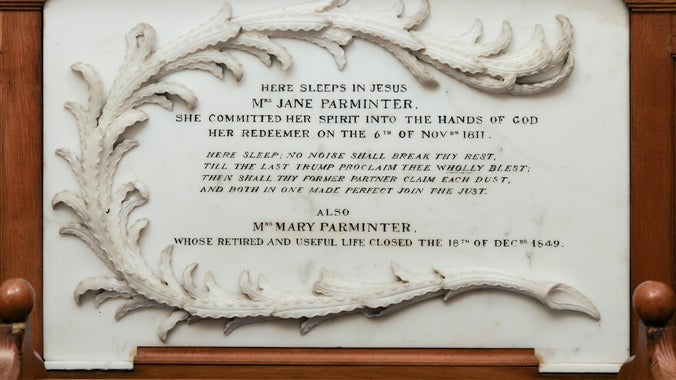
Mission and purpose
The alms houses and school must have offered a useful service to the local community of the time but also had a wider and bigger purpose. At this time, when deeply held religious faith guided personal decision making for many people, there was much interest in Christian mission. This included conversion of those of other faiths, notably Jews as it was believed by many that conversion of the Jewish peoples was an indicator and necessary precursor to a second coming of Jesus Christ. Those with funds to do so donated to organisations founded to achieve this. Particularly perhaps for Mary, A la Ronde may have been a practical way to support such mission and conversion to Christianity. The Trust records that priority should be given to any Jewess who had converted to Christianity or to the daughters of Jewish parents. However, as far as we are aware, no Jews were ever in residence nor attended the school. The name ‘Point in View’ may also relate to the ambition for conversion, although it is possible that it may also, or primarily, refer to the expansive views towards the River Exe.
Being visible
Although single women were a significant and recognised social demographic at this time, it is likely that Jane and Mary would have had some sensitivity to their singleton status, whether or not they had actively chosen that position for themselves.1 Their home might seem unusual today, but it was very much in keeping with cottage ornee architecture of the period and a style especially popular in South and East Devon. Their knowledge of fashionable taste and design, evidenced through the buildings on their estate and their gardens, was a way of demonstrating that they were adhering to social expectations of women of their class. Similarly, the inclusion of Point in View chapel in their estate and its visibility to any passerby might be understood as a visible demonstration of their piety and a means to ensure their position in local society.
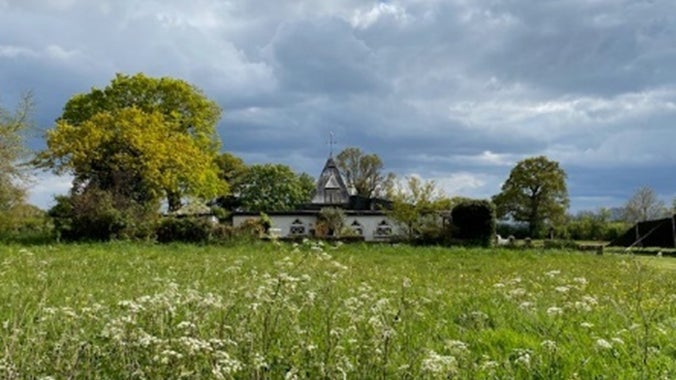
Point in View today
The Mary Parminter Trust and the church remain active and still retain much of the intention of their founder at their heart. Between 1969-77 five new bungalows were built and in 1997, the two alms houses remaining within the core building were reconfigured into one. Other rooms became extended space for the congregation, for community activity and a kitchen. The Trust still prioritises single women although one home is now intended for a couple. The Minister, who is also the warden for the alms houses, lives in the Manse originally built in 1829. The school closed in 1901.2
Jane and Mary were both buried in the chapel and a sense of their vision remains almost tangible within the quiet space of the building and in the continued life of the church and the Trust.
Notes
1. See Glover Trigger, 2024 for a useful summary.
2. Trudi Cotton. Pers com July 2022.
Sources
Cherry, B. & Pevsner, N. (1989) The Buildings of England Devon 2nd Ed, p. 446. Penguin Books
Glover Trigger, Robyn. (2024) Gender, religion, and charity: the case of Jane and Mary Parminter in the late-eighteenth and early-nineteenth century. Unpublished MA Thesis, University of Oxford.
Maudlin, Daniel. (2015) The Idea of the Cottage in English Architecture, 1760-1860. Routledge.
Smith, Robert Michael. (1984) ‘The London Jew’s Society and Patterns of Jewish conversion in England, 1801-1859. Jewish Social Studies. Summer-Autumn 43 (3/4), pp. 275-290. Indiana University Press.
https://historicengland.org.uk/listing/the-list/list-entry/1164838?section=official-list-entry [Downloaded 5th July 2024]
https://historicengland.org.uk/listing/the-list/list-entry/1000686 [Downloaded 5th July 2024]
https://www.maryparminter.org.uk/point-in-view/ [Downloaded 5th July 2024]

The Compendium
The Compendium is a collection of stories to delight and surprise. You can explore all things A la Ronde here in one central place for the first time. We will be adding new stories for years to come.
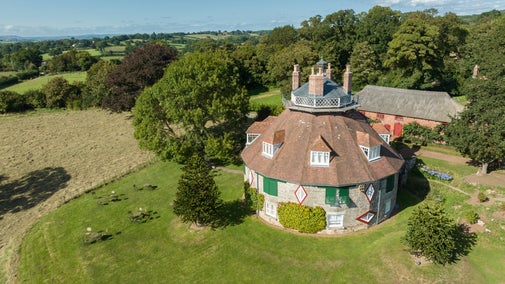
The Estate
Learn more about the estate at A la Ronde. With views over the countryside to the Exe estuary, the estate is as beautiful and varied as the house itself.

Our Project - A la Ronde: Conserving the Past, Creating the Future
In 2022 we embarked on a major project to transform A la Ronde’s offer for our visitors, volunteers, and local community.
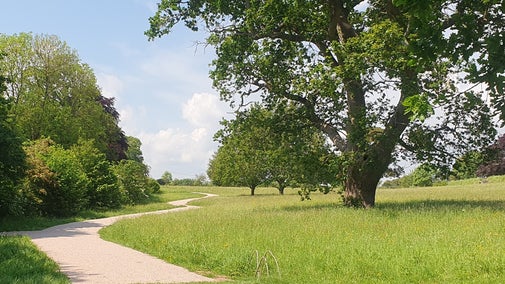
Meadow Perimeter Path
Find out more about the Perimeter Path at A la Ronde and the project's aims to reinstate this garden feature.